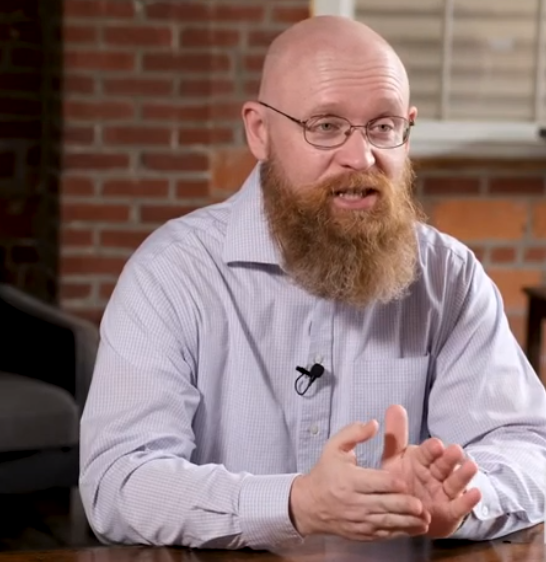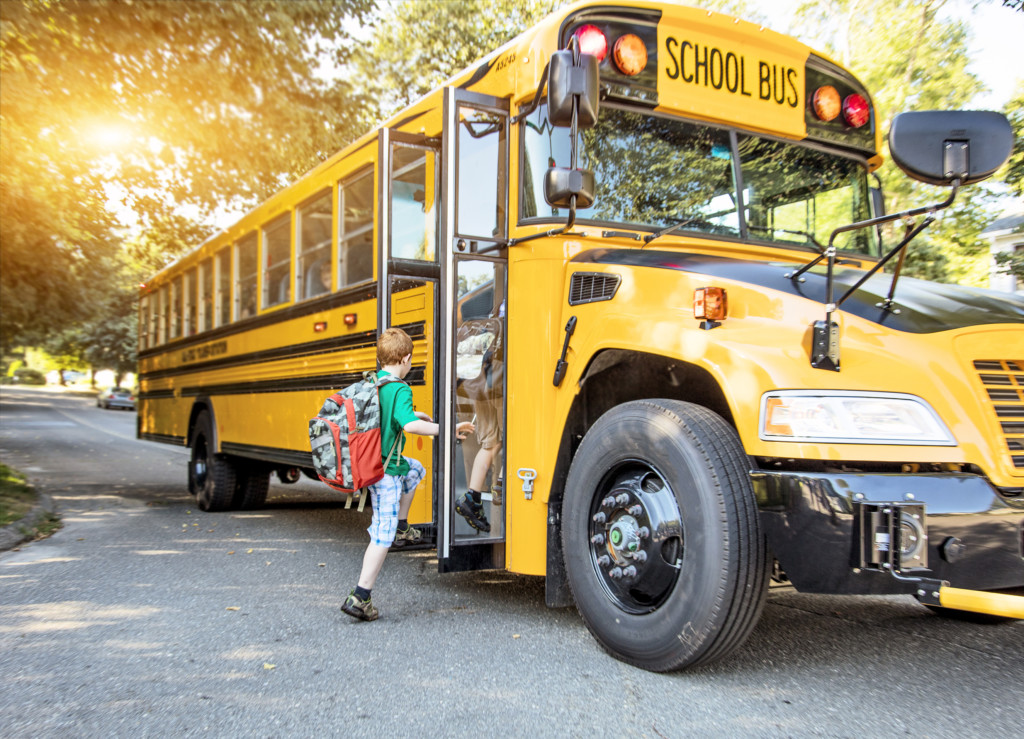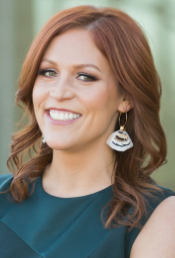
Editor’s note: This commentary from Denisha Merriweather, founder of Black Minds Matter and a reimaginED guest blogger, appeared this morning on the Washington Examiner.
Those who say school choice has racist roots are implying that parents, especially lower-income, black parents, should stay trapped in public schools that have failed their children for decades and continue to do so to this day.
To recount the history of racism in the American education system, one must start at the origin of schooling in America.
Why do we prop up the public education system as a symbol of education equity when it was once the primary mechanism for segregation?
Eventually, the federal government decided to provide support for freed blacks through the Freedmen’s Bureau . The bureau’s role was to help transition African Americans from slavery to freedom. It took responsibility for building all-black public schools, converting black independent schools into public schools, supporting existing independent black schools, and funding for volunteer teachers.
The commission of the Freedmen's Bureau was short-lived, but the desire for education freedom never waned. James Forman Jr. states that “in the clearest example of nineteenth-century black 'school choice,' some blacks continued building private schools even after the Freedmen’s Bureau opened publicly supported schools.”
To continue reading, click here.
 The White House on Sept. 13 issued an executive order to advance educational equity, excellence and economic opportunity for Hispanics.
The White House on Sept. 13 issued an executive order to advance educational equity, excellence and economic opportunity for Hispanics.
Included in the text of the order is the fact that Hispanic students continue to be underrepresented in advanced courses in math and science, and that they can face language challenges in the classroom. Only 40% of Hispanic children participate in preschool education programs compared to 53 percent of their white peers, so they’re already behind when they start kindergarten.
 A lack of creativity in the K-12 traditional education system when it comes to students for whom English is a second language has contributed to poor learning outcomes. Only 19% of Hispanic adults have at least a bachelor's degree compared with 1 in 3 adults overall, and just 6% have completed graduate or professional degree programs compared with 13% of adults overall.
A lack of creativity in the K-12 traditional education system when it comes to students for whom English is a second language has contributed to poor learning outcomes. Only 19% of Hispanic adults have at least a bachelor's degree compared with 1 in 3 adults overall, and just 6% have completed graduate or professional degree programs compared with 13% of adults overall.
While the executive order is a step in the right direction, RealClear Opinion Research polling in fall 2019 showed that when asked if they could select any type of school for their child, 70% of families selected a school other than their zoned public school. Polling from Beck Research conducted in January 2021 showed that 71% of Hispanics either strongly favor or somewhat favor school choice.
Leaders in the education community need to pay attention to what families want, because as the executive order relates, the COVID-19 pandemic exposed many inequalities that already existed among Hispanic students and families. The pandemic opened parents’ eyes, and now. Now more than ever, families not only want school choice; they need it.
The order falls short in that it fails to address ways families can access a school that meets the individual needs of their children if the schools they currently attend fail to do so. If we already know that access to a high-quality education and a fair shot at the American dream is hampered by systematic inequity, I believe we should be looking at how traditional school systems promote these inequities.
We need to give families options and have zero-tolerance for failing district schools in areas with a high population of students of color that have been doing a poor job for generations and failing the same communities this executive order aims to reach.
Let me be clear. The Hispanic community is tired of waiting for the traditional education system to improve and work efficiently. We are tired of being used for anyone's political agenda. Indeed, we would like to see immediate solutions that won't take years to implement. A child gets only one shot at a proper, quality education.
 Editor’s note: This commentary from Derrell Bradford, president of 50CAN, a nonprofit education advocacy group, appears in the September 2021 issue of the National Association of State Boards of Education magazine.
Editor’s note: This commentary from Derrell Bradford, president of 50CAN, a nonprofit education advocacy group, appears in the September 2021 issue of the National Association of State Boards of Education magazine.
One of the earliest conversations I can remember was my mother and grandmother discussing whose address we would use so I could attend a middle school I was not zoned for. That conversation happened at a kitchen table at the corner of Baker and Woodyear Streets in southwest Baltimore, a neighborhood that would become known to many Americans years later when its burning in the wake of the death of Freddie Gray was nation[1]ally televised.
Decades before I wrote an op-ed or analyzed the performance data of a school, my family was living in this neighborhood, trying to figure out how I could get the education that was right for me, just as many others do. And unknowingly, one of the most important lessons I learned there was about school choice in Baltimore—and in the country. As an education reform advocate, I work on school choice policies the most, and it is the issue about which I feel most strongly.
You might call it my first love, but it was not an amorous love. It was instead a love born of necessity.
The American public education system is already a school choice system, which is navigated in four ways. Families are lucky (as I ultimately was, having received a scholarship from grades 7-12 to an independent, all-boys school just outside the city, which we never could have afforded on our own). They are rich enough to pay private school tuition, or they are able to leverage the mortgage market to get a house near the right school. They are connected and thus know the right people.
Or they lie about where they live to gain entrance to a school for which they normally would not be eligible.
The revelation that we already live in a choice system, but one that does not distribute the power to choose equally or fairly, turns the usual conversation about school choice — who has it and how much they should have — on its head. It is essential context for members of state boards of education and other state leaders considering choice policies in any and all of their forms.
To continue reading, click here.
 Editor’s note: This commentary from redefinED guest blogger Valeria Gurr, who serves as director of external relations with the American Federation for Children, appeared Monday on washingtonexaminer.com.
Editor’s note: This commentary from redefinED guest blogger Valeria Gurr, who serves as director of external relations with the American Federation for Children, appeared Monday on washingtonexaminer.com.
Education has always mattered to me. As a first-generation immigrant of a single mother who didn't graduate from high school, I know firsthand how difficult it is to escape poverty without an education.
Before graduating with my master's degree, I decided that education was where I wanted to pursue a career, so I was excited when a teachers union hired me. I thought I had a real opportunity to help bring change to the education system.
This country does a disservice by not empowering educators to lead in their classrooms. I remember the countless conversations with my former colleagues about how to help teachers manage burnout, large classroom sizes, and professional development. We worked long and hard at finding ways to prevent teachers from leaving the profession within their first two years of employment. The system was awful.
It's challenging to make unhappy teachers happy with a system that fails them constantly. I left the job and found myself reflecting on why I left. Originally, I bought into the idea that I could bring change to the classroom and positively affect students and teachers, but the reality was that nothing ever changed.
Even after taxes brought in more revenue, teachers had to face salary freezes. The money never got to the classrooms. It wasn't entirely the union's fault — district mismanagement plays a big part. However, at the union, we fought for taxes in exchange for education improvements, which never became a reality, and we kept right on asking for more tax increases.
I became unmotivated and lost confidence in my purpose. Then, I found a new purpose and a passion for empowering families with additional high-quality educational options. Every day, I am motivated to fight for families who, like me, are searching for the American dream.
To continue reading, click here.

John Muir, one of the smallest elementary schools in Berkeley, California, is housed in a 1915 Tudor building nestled among redwood trees, native plants, flourishing vegetable gardens and a burbling creek.
The late, great Marilyn mothered our five children. As they accumulated over the span of eight years, she retired from teaching in her public elementary school but never lost her esteem for the profession.
Three of our children collectively have invested more than 40 years in the classroom, more than half in the inner-city. Our son Steve – fresh from seven years of service as a public high school principal – has returned to California to follow his star as a teacher in an intermediate public school.
One day he may allow me to tell his all-minority history class of a private evening I had with Martin Luther King Jr. in which we discussed King’s never-ending hope for a society of respect for every human being. Specifically, he wanted to hear about the legal risk of his plan for boycotts.
But what are these brown and black students of Steve’s doing anyway, clustered in this school when, just up the slope of the East Bay, there are mostly white schools, in the same district? These schools appear within easy reach but lie across some magic line.
Of course, they are “Open to all. Welcome! Just move your residence.”
Which is, of course, exactly what Marylyn and I did 50 years ago, happy to enroll our crew in the soon-to-be integrated public schools of Berkeley. We found a nice house near John Muir Elementary School, Malcolm X Intermediate and St. Augustine’s first through eighth. We had choice and we used it.
The minorities that cluster in Steve’s school are, of course, “welcome” everywhere – if they have the dollars to buy or rent a residence in the attendance area they prefer. It happens that few of these families are so endowed; and, although several accessible private schools are attractive (and most spend less per pupil), the tuition would have to come from parents’ pockets – where it is not.
How did this “great democracy” of ours ever get itself into such a grossly un-democratic, wealth-determined, compulsory public slough? Vladamir Putin might understand and approve, but should we? How do we tolerate this civic shame?
Fear among 19th Century elites of the minds and habits of multiplying immigrants account for the inception, and I suspect, longevity of the problem, the solution to which, to this day, is structured into most of our state systems. Not surprisingly, this segregation of poor and minority families has, over time, pawned a bureaucracy that designs and controls the formal education required of would-be teachers and administrators of our public schools.
Thus, the inauguration of – and near monopoly – of the “ed schools,” trending ever in their message to the shallow and the deeply political. This probably was inevitable.
Legislators – their providers – found the “public” schools to be innocently (and even patriotically) admired by their middle-class constituents. And the masters of the teachers unions awakened to their unique power over the poor family. Gradually, they have managed the conscription of its child, thus creating the inner-city imperialism we behold today.
Again: If you are well-off, you treasure and scrupulously practice your role of parent, to the great advantage of child, family and civil society; if you are not, both of you – parent and child – take whatever the commanding officers decide.
This may be ideal; one sometimes gets lucky. But, instead, it just may make you and little Rosie mutually miserable. And whichever comes, you are out of it – helpless, useless.
So, just sit back for the next 12 years; but never, never forget your duty as a good and responsible citizen, just like the rest of us!
 Editor’s note: Jude Schwalbach, a research associate in the Institute for Family, Community and Opportunity at The Heritage Foundation, wrote this commentary expressly for redefinED.
Editor’s note: Jude Schwalbach, a research associate in the Institute for Family, Community and Opportunity at The Heritage Foundation, wrote this commentary expressly for redefinED.
For a century, public schools have been billed as the center of a community, with Friday night football games, clubs, theater, and arts activities. But not all students have access to these “community” schools.
Within school districts, most public schools have attendance zones determined by district officials. These “lines within districts,” as author Tim DeRoche describes them, mean all families that reside within the geographic boundaries of the attendance zone are assigned to the public school in that zone. These zones, however, often divide communities by race, socio-economic divisions, and social capital.
In his book, A Fine Line, DeRoche illustrates how much school zones can affect the make-up of a school’s community. For instance, students attending Mount Washington in Los Angeles during 2019 lived in a zip code with a median home value of $847,522. Mount Washington Elementary is ranked a B+ school on Niche.com – a school rating website – with nearly 68% and 75% of students meeting or exceeding state standards in math and reading, respectively.
Meanwhile, just a little more than a mile away, Aldama Elementary School’s student body lives in a zip code where the typical home value is $47,000 less than in Mt. Washington’s zip code. Niche ranked the school a C school, with only 33% of students meeting or exceeding state standards in both math and reading.
At the same time, each school’s number of eligible students for the Free Lunch and Reduced-Price Lunch Programs — historical poverty proxies—illustrate a marked difference in student body. More than 70% of Aldama Elementary students — nearly seven times the number of eligible students at Mt. Washington — are eligible for the Free and Reduced-Price Lunch program.
Depending on which side of the boundary line a student lives on, she will be assigned to either Mount Washington or Aldama — likely having a significant impact on the educational opportunities available to her.
Even though students who attend Aldama and Mount Washington are in the same school district, paying the same property taxes to support all public schools within the district, government officials draw lines around which “public” schools they may attend. This hardly seems fair.
The school zone boundaries sharply divide families that live literally next door to each other. Which side of the street a family lives on can determine the educational opportunities fostered by their “free” public school.
Unfortunately, this phenomenon is all too common; families in cities across America, such as New York, Los Angeles, Dallas, Philadelphia, and Chicago, to name a few, find themselves in similar situations.
For example, in 2019 the Senate’s Joint Economic Committee reported that enrollment in a high-performing public school and greater educational opportunities is often associated with purchasing a more expensive home.
The committee’s report found that “The average U.S. zip code associated with the highest quality (A+) public elementary school has a 4-fold ($486,104) higher median home price than the average neighborhood associated with the lowest quality (D or less) public elementary schools ($122,061).”
At the same time, the gerrymandered nature of school zones means that in many cases some children assigned to a poorly performing school actually live closer to a higher performing school.
For instance, children living between San Adreas Ave and Oneonta Dr. in Los Angeles are closer to the high-performing Mt. Washington Elementary — just a 15-minute walk — but are assigned to the lower-performing and more distant Aldama Elementary.
“No matter the goal, an attendance zone always creates sharp inequalities of opportunity for families who live in the same neighborhood. Some children will be allowed to enroll in the best public schools, and their playmates across the street will be excluded because of where they live,” writes DeRoche.
School zones can divide communities, shepherding children from different social and economic backgrounds into different schools. Such divisions are antithetical to the free and voluntary collaboration essential to American institutions.
Instead of assigning students to schools based on attendance zone boundaries, school districts should stop drawing attendance zone boundaries and instead adopt open enrollment policies, which would allow students to enroll in any school within their school district. Open enrollment, Heritage’s Lindsey Burke and Jonathan Butcher write, “effectively separates housing from schooling.”
However, Burke and Butcher note that even though 47 states in addition to the District of Columbia already allow some type of open enrollment policy, many school districts choose to not participate.
For instance, Alaska only requires that school districts provide open enrollment to students in persistently dangerous schools. By contrast, families in Florida can enroll their children in any school operating in the state’s 67 districts that is not at full capacity.
Expanding open enrollment to benefit all children would mean all children within a district have equal opportunities to attend public schools that are the right fit for them.
 In this podcast video, redefinED’s executive editor speaks with longtime education choice advocate Chad Aldis, vice president for Ohio policy and advocacy at Fordham, wo previously served as executive director of School Choice Ohio and was Ohio State director for StudentsFirst.
In this podcast video, redefinED’s executive editor speaks with longtime education choice advocate Chad Aldis, vice president for Ohio policy and advocacy at Fordham, wo previously served as executive director of School Choice Ohio and was Ohio State director for StudentsFirst.
Ladner and Aldis discuss a recent Fordham study that mapped out open enrollment policies across Ohio after some media outlets questioned whether open enrollment education choice policies exacerbated school segregation. The study concluded they do not, it brought to light something more alarming.
Under state law, districts choose whether to accept nonresident students. Most suburban districts in Ohio have kept their doors shut. Despite being public agencies – often boasting of being "open to all" – these school systems deny children access just because they don’t have the right address.
“Let’s be real about this … no, you’re not to open to everybody. You’re open to everyone who can pay the price of admission … The price of admission is property taxes.”
EPISODE DETAILS:
· Aldis’s critique of the current system, which results in high-wealth suburban school districts “walling out” poorer students from urban centers, who have been shown to benefit the most from education choice
· How Ohio’s open enrollment system is different in rural counties
· How rules restricting charter schools to urban areas further restricts choices for minority and low-income families
· Comparisons with another education choice state, Arizona
· What can be done to correct the inequities caused by Ohio’s open enrollment choice system
LINKS MENTIONED:
https://fordhaminstitute.org/ohio/research/open-enrollment-and-student-diversity-ohios-schools

Editor’s note: This post’s author, Emily Anne Gullickson, J.D., M.Ed., is president and founder of Great Leaders, Strong Schools and a former middle school teacher in Phoenix.

Emily Anne Gullickson
In 1939, representatives from 48 states developed a set of school bus standards resulting in a massive standardization of school transit systems in America. Last year, 26 million students in the United States boarded nearly 480,000 yellow school buses to go to their public school.
Almost 80 years later, a lot has changed in the technology and transportation industries, yet we continue to have a one-size-fits-all approach to transporting students.
School districts are struggling to provide efficient bus services in the face of escalating costs and increasingly complex education systems where more students attend public schools outside their neighborhoods.
Arizona recently was recognized as the most choice-y school choice state in the nation according to EdChoice. For 40 years, our state has led the way with public school options, beginning with open enrollment, which allows students to choose any school both within the boundaries of the school district in which the student rides and to transfer to public schools outside of their resident school district. With the onset of public charter schools in 1995, families truly were no longer limited to a geographically defined attendance zone in Arizona.
Yale University researchers compiled information in 2016 indicating that nearly one in two K-8 students in Maricopa County do not attend the district school to which they were assigned based on home address. The actual number is higher, as the analysis was conducted before the large pandemic shift and did not include homeschool families, online students, or students attending private or parochial schools.
Yet we still have not achieved giving all parents a real chance to truly have access to the full range of public education options. If transporting a student across town to a public school that is the right fit is a burden to a family, then that family does not actually have true access to public schools of choice.
Barriers also are experienced in our rural and remote communities. An optimal student transportation system is highly context-dependent; what works in a rural school district may not work in an urban or suburban district. Rural districts must use the same large buses to transport students as in Phoenix or Tucson, even when the number of students being transported and the geographic terrain does not justify them, resulting in empty seats, poor fuel efficiency and major wear and tear on the vehicles.
Arizona’s remote communities are not alone in having fewer alternatives than urban counterparts. According to the Community Transportation Association of America, approximately 28% of rural residents live in areas in which the level of transit service is negligible, and another 38% of rural residents live in areas without any public transit service. A choice is not a choice if you can't get there, no matter how simple and accessible the open enrollment process is.
This fall, our sister organization A for Arizona hosted focus groups with school partners and community members about transportation barriers and solutions. The feedback that was shared served as inspiration for Arizona Senate Bill 1683, championed by Senate Education Chairman Paul Boyer, which provides innovation grants as an incentive and support to public school leaders wanting to rethink our school transportation system to better serve public school families.
These grants will allow a series of locally driven solutions to be tried and evaluated to lead to greater efficiency and cost savings, recognizing geographic and local needs and providing access for more families to the public learning options that best meet each child’s needs.
With this transportation grant program, public school systems could leverage partners to improve operational and cost-efficiency as well as data collection, such as length of ride times, radio-frequency identification cards to track student ridership daily, and the latest GPS technology utilized in other modes of mass transit. GPS tracking for school buses also would empower parents to monitor a school bus’s status and exact location while capturing data for more efficient routing.
Other ideas such as neighborhood carpools and grants to parents are on the table here, too. Whatever it is that district and charter leaders are thinking about trying, they can pilot it with these grant dollars before trying to expand statewide. Transportation regularly is the least efficient component of a school budget and is about to break the budget of smaller schools and systems. Innovation is necessary, and these grants put some money on the table to help leaders do just that.
Under this bill, local school leaders who want to opt in with a grant proposal have the flexibility to design community-driven solutions while maintaining necessary protections for student safety and educational opportunity.
Now is the time to reimagine and rethink education – which must include how to get students to where they can learn best.